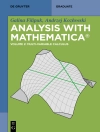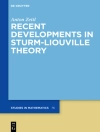Imagine mathematics, imagine with the help of mathematics, imagine new worlds, new geometries, new forms. The new volume in the series “Imagine Math” is intended to contribute to grasping how much that is interesting and new is happening in the relationships between mathematics, imagination and culture.
The present book begins with the connections between mathematics, numbers, poetry and music, with the latest opera by Italian composer Claudio Ambrosini. Literature and narrative also play an important role here. There is cinema too, with the “erotic” mathematics films by Edward Frenkel, and the new short “Arithmétique “ by Munari and Rovazzani. The section on applications of mathematics features a study of ants, as well as the refined forms and surfaces generated by algorithms used in the performances by Adrien Mondot and Claire Bardainne. Last but not least, in honour of the hundredth anniversary of his birth, a mathematical, literary and theatrical homage to Alan Turing, one of the outstanding figures of the twentieth century.
Tabella dei contenuti
Exotic Spheres and John Milnor by M. Abate.- The Solitude of Last Words by C. Ambrosini.- From Pollock’s Summertime to Jacksontime by D. Amodio.- Spatial Rhythms in Cinema between the Avant-Garde and Entertainment by G.P. Brunetta.- Myrmedrome: Simulating the life of an Ant Colony by S. Cacace, E. Cristiani, D. D’Eustacchio.- From Canvas to Music: Mathematics as a Tool for the Composition of Jackson Time by C. de Fabritiis.- Gödel’s Childhood and Other Algorithms by V. Della Mea.- Lessons in Mathematics, at the Cinema by M. Emmer.- The Fascination of Numbers, between Music and Poetry by M. Emmer.- Numeri Malefici (Evil Numbers): Homage to Fabio Mauri by M. Emmer.- Extracting Information from Chaos: a Case in Climatological Analysis by F. Bonghi, R. Ferretti.- Morphogenesis and dynamical systems by S. Franceschelli.- Mathematics, Love, and Tattoos by E. Frenkel.- Alan Turing and the Poisoned Apple by M. Vincenzi.- Mathematics according to Italo Calvino by G. Lolli.- Alan M. Turing (1912-1954) by G. Lolli.- Empirical Evidence that the World Is Not a Computer by J.W. Mc Allister.- On the Tangible Boundary between Real and Virtual by A. Mondot.- Arithmétique by G. Munari.- The Mathematical Mind – Iconography of a Tension by P. Pagli.- The Wild Number Problem: Math or Fiction? by P. Schogt.- Fort Marghera and the French and Austrian Plans of Defence by M. Scroccaro.- L’art du Trait est l’Attrait de l’Art by S. Skaf.- Cellular Automata: the Game of Life by G.M. Todesco.- A Play at Dusk Mathematics in Literature by C. Toffalori.
Circa l’autore
Michele Emmer is professor of mathematics at La Sapienza University in Rome. He has made eighteen films in the series “Arte e matematica”, including a film on Escher. He is the editor of the book series “Mathematics and Culture” (Springer) and “The Visual Mind” (MIT Press). His latest books are: Bolle di sapone tra arte e matematica (Bollati Boringhieri, 2009), winner of the 2010 Viareggio Prize; Flatlandia by E. Abbott, accompanied a film on DVD by the same name with music by Ennio Morricone (Bollati Boringhieri, 2008); Visibili armonie. Arte cinema teatro e matematica (Bollati Boringhieri, 2007); The Visual Mind 2 (MIT Press, 2006); M. C. Escher’s Legacy (Springer, 2003), Mathematics and Culture VI (Springer, 2009); Numeri immaginari. Cinema e matematica (Bollati Boringhieri, 2011); Matematica e cultura 2011 (Springer, 2011).












